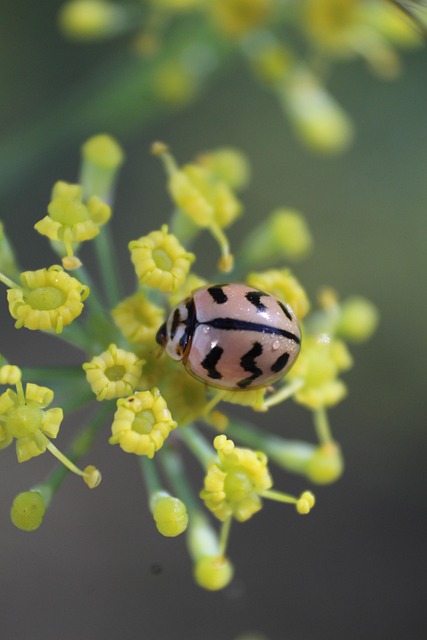Boxelder bugs, common across North America, cause concern with their swarming behavior in late summer and early fall. Professional boxelder bug control services offer diverse methods, from traditional extermination to eco-friendly solutions, catering to both residential and commercial properties. Landscaping can be a powerful tool, creating natural barriers and fostering habitats for beneficial insects and birds. For existing infestations, specialized removal services use advanced techniques like organic pesticides and traps. Many are adopting eco-friendly methods, including biological control and habitat modification, for sustainable pest management.
Landscaping isn’t just about aesthetics; it plays a pivotal role in controlling pesky invaders like the boxelder bug. These insects, known for their relentless summer swarms, can transform homes and businesses into temporary shelters. Understanding their life cycle is key to effective management. Professional landscaping practices offer tailored solutions, from strategic plant selection to integrated pest control methods. Moreover, eco-friendly treatments provide a sustainable approach to boxelder bug extermination, ensuring both beauty and pest-free environments for residential and commercial spaces. Discover how these strategies can make your property less appealing to these critters.
Understanding Boxelder Bugs and Their Life Cycle
Boxelder bugs (Boisea trivittata) are a common pest in North America, known for their swarming behavior during the late summer and early fall. These insects undergo a complete life cycle, starting as eggs laid by female bugs on tree branches or other suitable surfaces. The eggs hatch into nymphs, which go through several molts before transforming into adult bugs. Adult boxelder bugs typically live for one to two years, with the females laying hundreds of eggs during their lifetime.
Their presence can be a significant concern for both residential and commercial properties, as they tend to gather in large numbers under tree bark or in crevices, often moving indoors during cooler months. Professional boxelder bug removal services offer various control methods, including eco-friendly solutions, to manage infestations effectively. These methods range from traditional extermination techniques to more sustainable practices, ensuring that the pests are eliminated without causing harm to humans, pets, or the environment.
The Impact of Landscaping on Bug Population Control
Landscaping plays a significant role in managing and minimizing Boxelder Bug populations effectively. By implementing strategic garden design and plant selection, professionals can offer boxelder bug control services that target these insects while promoting a healthy ecosystem. Well-planned landscapes act as natural barriers, making it harder for bugs to access homes and buildings.
Eco-friendly boxelder bug solutions, including residential and commercial treatments, often involve creating habitats that attract beneficial insects and birds known to prey on Boxelder Bugs. This biological control method reduces the need for chemical interventions like traditional boxelder bug extermination. Professionals in this field can guide property owners towards suitable plant choices that deter these pests naturally, providing long-lasting solutions that are safer for both the environment and residents.
Professional Landscaping Practices for Boxelder Bug Removal
Professional landscaping can significantly contribute to effective boxelder bug control and removal. Landscaping practices such as tree and shrub selection, placement, and maintenance play a crucial role in managing these pests. Certified professionals can recommend and implement eco-friendly solutions that target specific habitats where boxelder bugs proliferate. For instance, choosing the right plants that are less attractive to these insects or creating physical barriers through strategic landscaping can deter boxelder bug infestations.
When it comes to dealing with established boxelder bug problems, professional boxelder bug removal services offer advanced extermination techniques. These experts employ safe and environmentally conscious methods, including organic pesticides, traps, and natural repellents, for both residential and commercial settings. By combining specialized equipment and in-depth knowledge of pest behavior, they ensure thorough boxelder bug control, providing long-lasting solutions that prevent future infestations.
Eco-Friendly Solutions and Their Efficacy in Treating Boxelder Bugs
In the quest to minimize boxelder bug infestations, many homeowners and businesses are turning to eco-friendly solutions as a preferred approach. These methods offer a more sustainable and safer alternative to traditional chemical-based pest control for boxelder bugs, with minimal environmental impact. Professional boxelder bug removal experts now employ a range of innovative techniques, including biological control, habitat modification, and targeted applications of natural repellents.
Eco-friendly boxelder bug solutions have proven highly effective in both residential and commercial settings. By focusing on the bugs’ life cycle and behavior, these methods disrupt their breeding patterns and deter their presence. For instance, introducing natural predators like spiders and ladybugs can significantly reduce bug populations over time. Additionally, proper landscape management, such as removing debris and maintaining tree health, creates an environment less conducive to boxelder bug habitats. This holistic approach not only provides excellent pest control for boxelder bugs but also promotes a healthier and more balanced ecosystem.
Landscaping plays a pivotal role in managing and minimizing boxelder bug populations. By combining strategic planting, proper maintenance, and eco-conscious practices, both residential and commercial properties can effectively deter these pests. Professional boxelder bug removal services offer specialized treatments, while eco-friendly solutions provide sustainable alternatives. Understanding the life cycle of boxelder bugs and implementing tailored landscaping techniques is key to achieving long-lasting control, ensuring a comfortable living or working environment free from these unwanted visitors.
